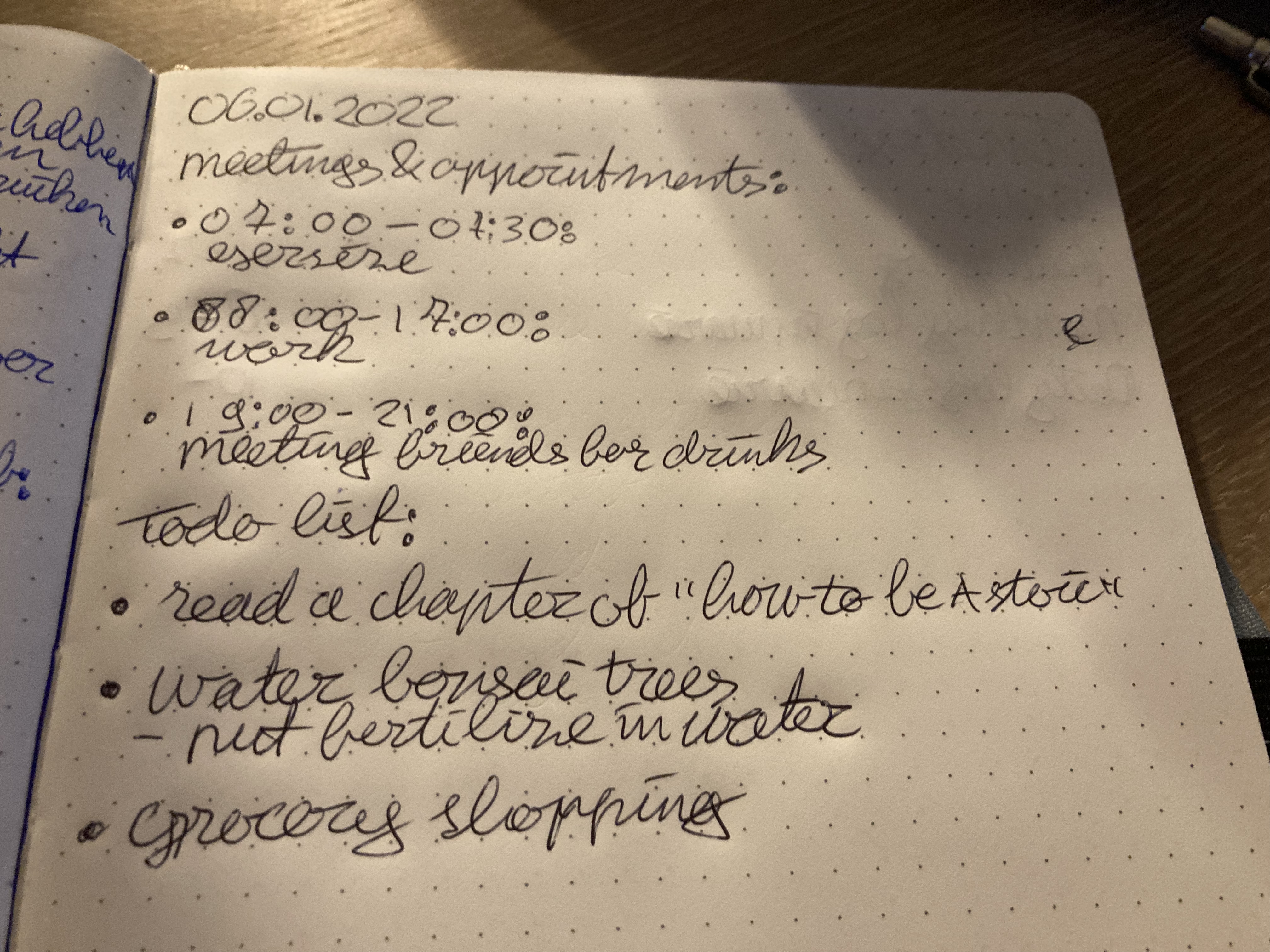Bullet Journaling: How it works for me
This guide is by no means the end all be all guide on bullet journaling. I’m simply stating what works for me so that you can pick and choose what works for you. I started bullet journaling during the first internship of my bachelor degree after I saw it in a YouTube video about productivity. I have always struggled to stay organized. In highschool I regarly forgot to do my homework. So when I got this internship at this big organization that at that point was my dream organization to work for I knew I had to step up my game.
I use 2 different bullet journals. One for my personal life and one for my work. I prefer to keep work and personal life separate. I have a different laptop and phone for work so that is why I also have a different bullet journal for each. Of course these sometimes overlap.
My personal bullet journaling system⌗
My bullet journal is also not as fancy as most of the stuff you will see on Instagram or Pinterest. I would call mine very minimalist because I use it for productivity (and not as a creative outlet). My system of bullet journaling is a little bit different then the system created by Ryder Caroll [1][2]. I use different keys than the ‘traditional’ key system of bullet journaling.
My keys⌗
I use the following keys:
- • Task
-
- Notes
- O Unplanned event that has happened but was important. These help me to see if there are patterns of unplanned work that might require planning.
To keep track of the status of the tasks I use the following system:
- If the task is done I put a checkmark (✓) through the bullet.
- If the task is moved I give it a little arrow (>) to indicate that it has been moved.
- If the task has been removed I give it a x (X) through the bullet.
I also keep a list of appointments, meetings and other planned events at the top
- • starttime - end time
- Short description of event/meeting/appointment

My pages⌗
The pages that I use are similar to that of the traditional bullet journal system:
- I have the key page to explain the keys.
- Four index pages to keep track where everything is.
- Four pages for the future log of work I need to do.
- 2 monthly log pages: 1 general overview of the month and one todo list for the month
- Daily log for the daily stuff things
The daily log⌗
The daily log is really the core of my bullet journal. The stuff I use everyday. This is how one of my pages looks. Warning, my handwriting is pretty awful. [photo of daily log demo page]
I first start with the appointments I have that day and list them in the order that they will take place. That way I have a clear list of everything. After is my todo list of tasks I need to do that day. In the todo list I will also take my notes of any meetings or other things.

Tools⌗
I believe that having the right tools is an essential part of doing your job. These are the tools I use for my bullet journals.
Notebooks⌗
For my personal bullet journal I currently use the Karst Stonepaper A5 dotted [3]. I got this as a birthday gift from friends and I must say that I really like it for bullet journaling so far. For my work I use a notebook that my employer had custom made for all the employees. They are free so that is why I use them ;).
Pens⌗
As a pen I use a regular Parker Jotter [4] with black filling for both my personal and work bullet journal. I prefer the ones with the black plastic grip although I also have the steel ones.